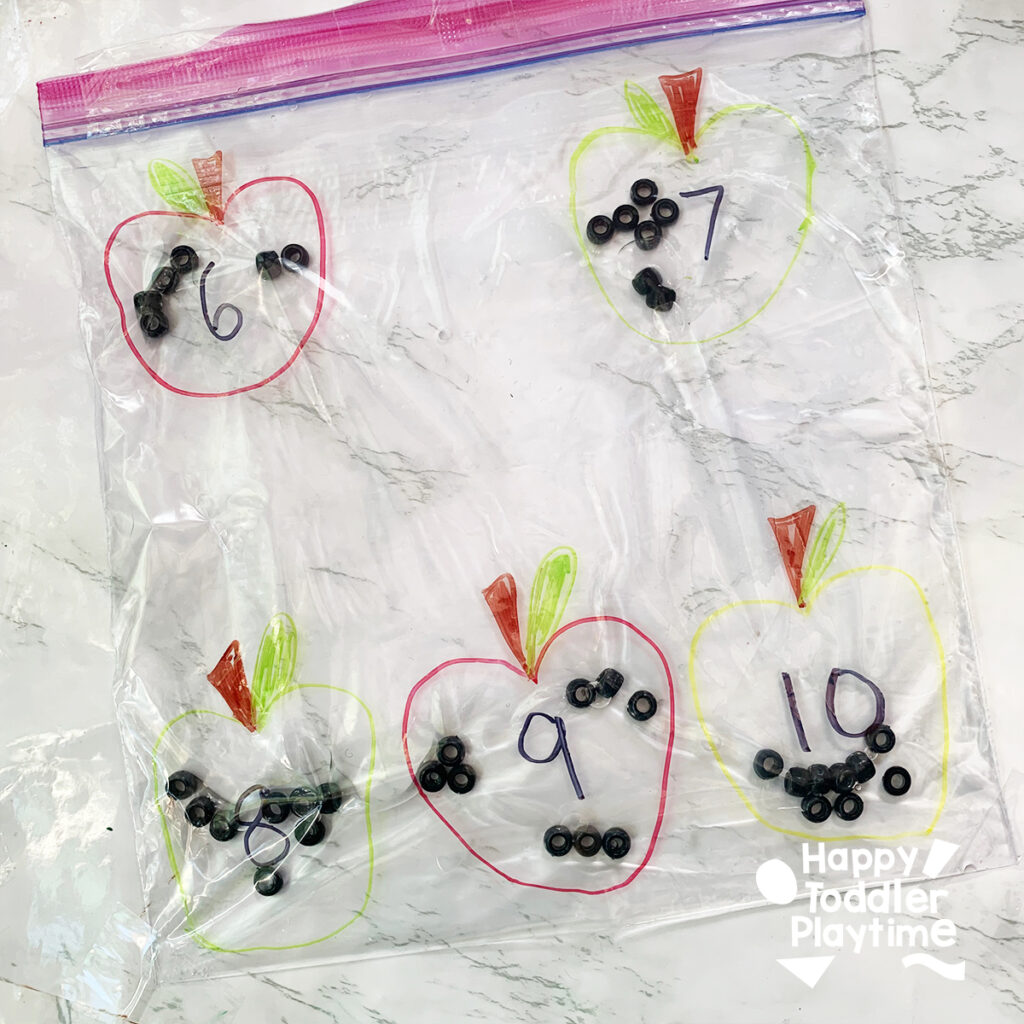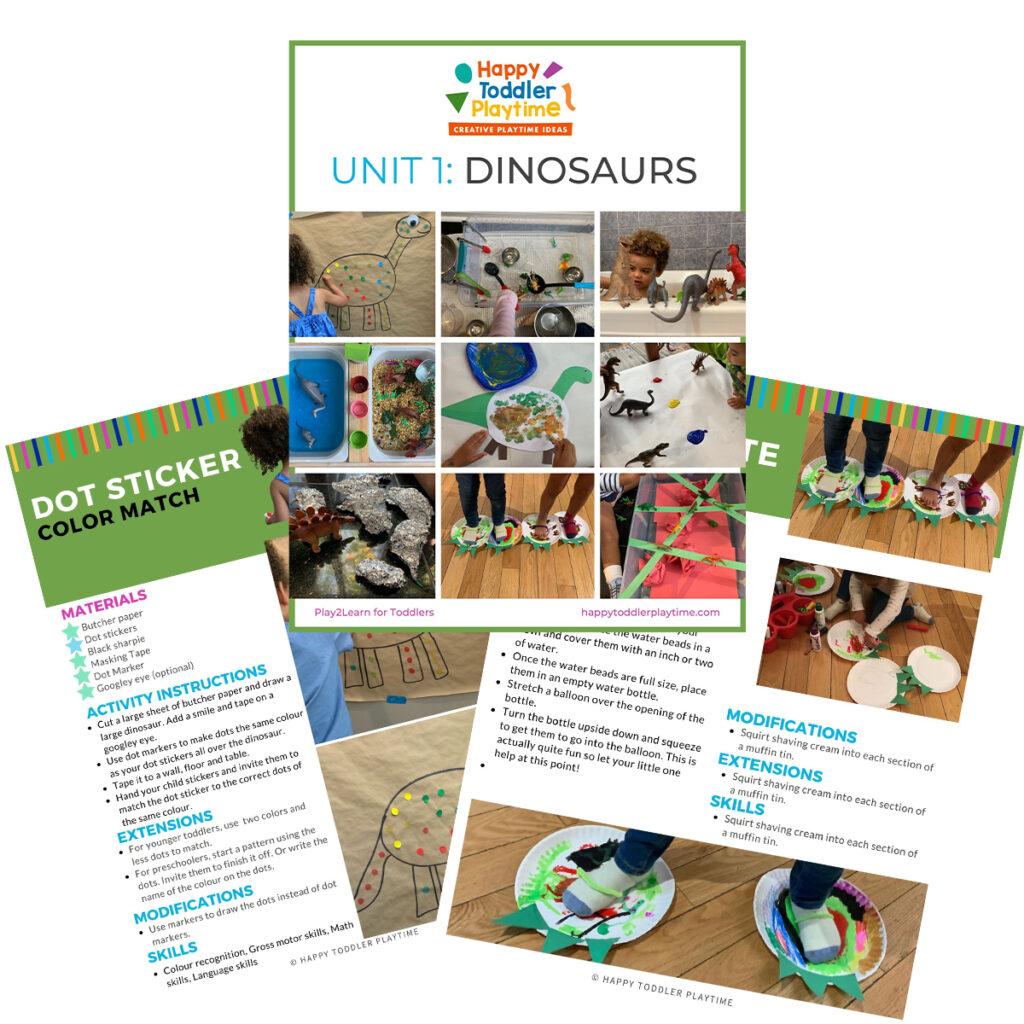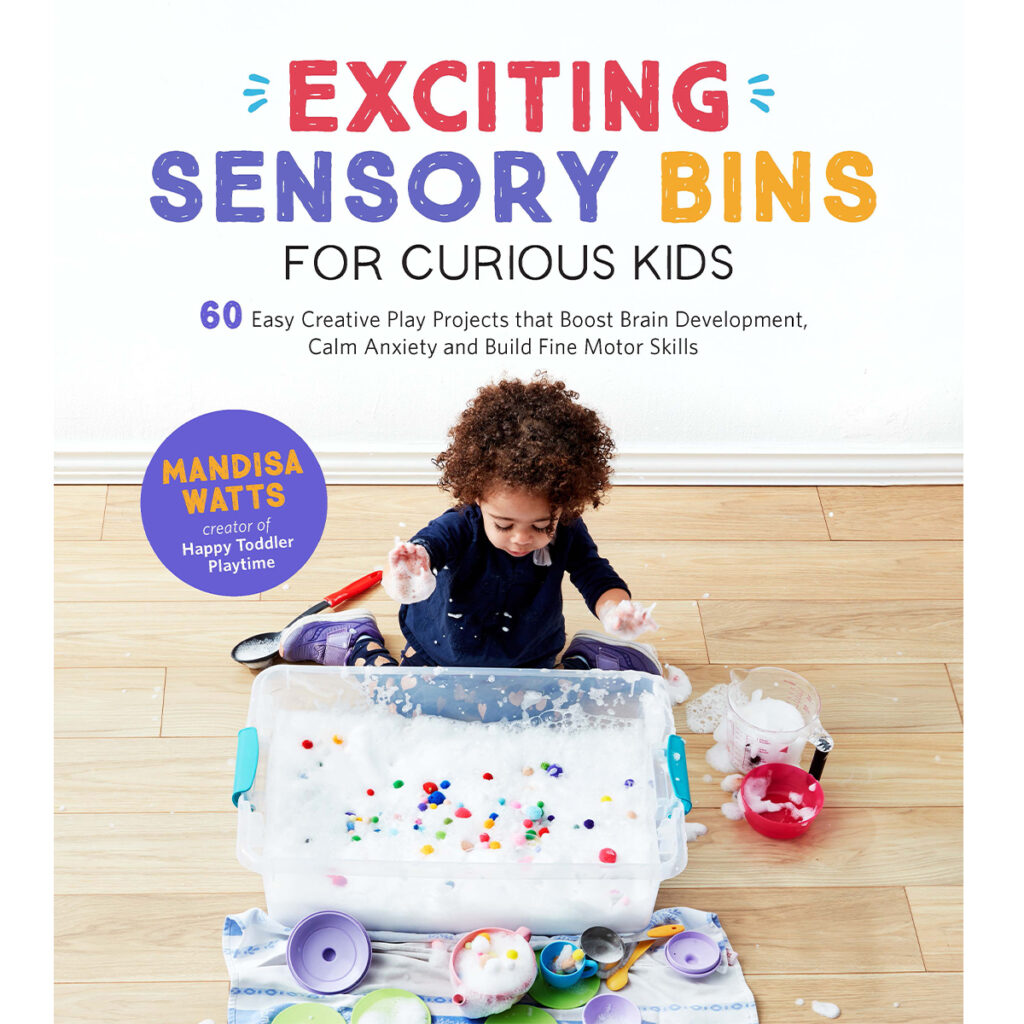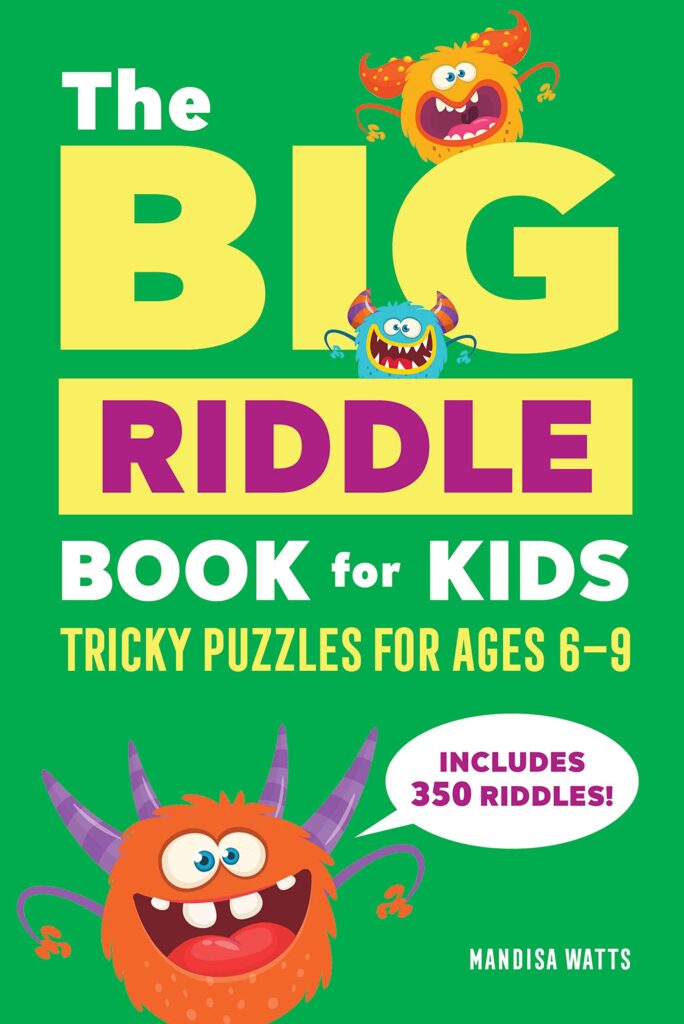Apples are synonymous with autumn. They remind us of apple pies, apple bobbing, and of course, the fascinating journey from seed to tree. As the season unfolds, why not bring a bit of that apple magic indoors with a hands-on educational activity? Enter the Apple Seed Counting Sensory Bag! This tactile, visual, and downright fun learning tool is perfect for little ones to explore counting in a sensory-rich way.
WILL YOU MAKE THIS APPLE SEED SENSORY BAG WITH YOUR CHILD? PIN IT FOR LATER!

Materials You’ll Need
- A ziplock bag (gallon-sized works great)
- Permanent markers (red, green, brown for the stem and black for the numbers)
- Black pony beads (these will represent our apple seeds)
- Water
- Duct tape or packing tape
How to Make A Apple Seed Counting Sensory Bag
Design Your Apple: On the front side of your ziplock bag, use your permanent markers to draw a big, juicy apple. Start with a red marker for the apple’s body, brown for the stem and then use green for the leaf. Let your creativity run wild – maybe even add a cute worm peeking out! Using a black sharpie write the numbers inside the apples. Depending on the age of your child you can start from 1 to 5 or 6 to 10.

Seed Prep: Count out a bunch of black pony beads. These beads are going to be your apple seeds. Depending on the age and counting level of the child, you can vary the number.

Filling Time: Open the ziplock bag and pour in your black pony beads. Next, fill the bag with water until it’s about half or three-quarters full. The water not only gives a fascinating sensory feel but also helps the ‘seeds’ move around more freely.

Seal and Play: Push out as much air as possible from the bag and then seal it tight. For added security against leaks, you might want to tape the top.

Engaging with the Sensory Bag
Counting Fun: Ask your child to move the beads (seeds) around and count them. As they press and move the seeds, they’ll also be getting some great sensory feedback! Invite them to count and move the correct number of pony bead seeds into each apple.
Math Challenges: For older kids, you can give basic math problems. “If a bird ate two seeds, how many would be left?” or “If this apple had five more seeds, how many would there be?”

Safety Note: Always supervise children while playing with the sensory bag. Even though it’s sealed, it’s essential to ensure they’re not trying to open it or put beads in their mouth.

The Apple Seed Counting Sensory Bag is more than just a fun activity; it’s an engaging learning tool. It merges the tactile world with visual cues, helping children understand counting and basic math concepts in a hands-on way. Plus, it’s a great conversation starter about nature, growth, and the fascinating world of apples!
Age Suitability
This activity is good for toddlers aged children 3 years old and up with adult assistance.
Mess Level
The mess level for this activity is low.
Difficulty to Create
Low.
Skills Developed
Language development, shape recognition, color recognition, hand-eye coordination, fine motor skills, imaginative play, creativity.
Toddler and Preschooler Curriculums, Books & TV Show!
Play2Learn Toddler & Preschool Programs for Curious Toddlers
There is no limit to your toddler’s energy and curiosity. That energy and curiosity although a joy can be challenging at times. Their interest in just about everything around them is what makes them great learners. One and two year olds can soak up so much just from their senses!
But as a teacher or parent that thirst for learning can be exhausting. That is why I created this toddler and preschooler program. To help you get the most out of this time with your curious toddler without having to come up with creative ways to play and interact with them.
Play2Learn for Toddlers includes 20 Units for toddlers. Each 2-week toddler unit has 20 super easy to set up and engaging activities for toddlers 18 months to 3 years.
Play2Learn Preschool which includes 20 Units for preschoolers. Each 2-week preschoolers unit has 20 unique and easy to set up and engaging activities for preschoolers 3 years to 5 years. That’s over 800 learning activities for your toddler and preschooler at your fingertips! So many ideas you and your child will never be bored again!
These toddler and preschool lesson plans and activities will definitely keep you and your toddler and preschooler busy playing and learning!
Click here for more information: Play2Learn

Designed for toddlers 18 months and up.
Book: Exciting Sensory Bins for Curious Kids
Did you know I wrote a book of sensory bins? Click here for more information Exciting Sensory Bin for Curious Kids. Or grab your copy at Amazon.
Boring afternoons are made exciting with awesome animal-based bins, like Salty Shark Bay or Yarn Farm. Pretend play bins like Birthday Cake Sensory Play or Bubble Tea Party encourage creativity and imagination. And your kids will have so much fun they won’t even know they’re getting smarter with STEAM (science, technology, engineering, art and math) activities like Sink or Float Soup, Magnetic Letter Hunt or Ice Cream Scoop and Count.
Designed for toddlers 18 months and up.

Book: Super STEAM Activity Book for Kids
Learning all about science, technology, engineering, art, and math sets kids up for scholastic success―and it can be so much fun! Watch kids enjoy building STEAM skills as they color friendly fish, help water find its way to tree roots, solve math problems with mazes, and more.
Find out more and grab your copy here.
Designed for preschoolers 3 years old and up.

Book: Big Book of Riddles for Kids
Riddle me this: What’s an exciting way to practice critical thinking while having a blast? The Big Riddle Book for Kids, of course! From hilarious puns to tough brain teasers, kids can build problem-solving skills with hundreds of riddles tha. t show them how to think outside the box.
- 350 riddles for kids—Have hours of fun with riddles, puns and jokes, and math and logic puzzles that’ll get their wheels turning!
- Level up their skills—Riddles get trickier as kids progress through the book, challenging them as they get better at solving puzzles!
- Double-check their work—Kids can check their answers in the back of the book with a handy answer key.
Help children expand their minds while having fun with this puzzle book for kids!
Designed for kids ages 6 years old and up.

TV Show: Curious Crafting
I’m so excited to share my crafting TV show Curious Crafting which launched in July 2022 on TVOkids and TVOkids YouTube! Season 2 aired in August 2023! My show was also nominated in 2023 for Best Live Action Preschool Series by the Youth Media Alliance Awards of Excellence.
Curious Crafting Season 1 is also now airing in Australia on ABC! Watch it here!
Set in the ultimate crafting space, Curious Crafting is a short form pre-school age series about the joy of making crafts. I lead a rotating cast of adorable little preschoolers (including my own) making magic out of common household objects.
In each episode we transform recycled items into magical crafts like a milk carton school bus, paper bag puppet or cotton pad turtle. The crafters learn and laugh their way through each activity while demonstrating what their young imaginations can create.
Curious Crafting shares the adventure and joy of making art with takeaway lessons for creating crafts at home.
This show designed for toddlers and preschoolers 2.5 years old and up.
The Best Sensory Play Kits for Kids
Play is at the core of learning during the early years and it can take many forms. One of the most important of these is sensory play because it engages all of a child’s senses (taste, touch, smell, sight and hearing) and has a enoumous positive impact on brain development.
Our Sensory Play Kits are some fun and easy ways to keep your child engaged while at the same time using sensory play to nurture their mind!
Shop our ready made play kits here.
Designed for preschoolers 3 years old and up.

Apple Seed Counting Sensory Bag
Materials
- A ziplock bag (gallon-sized works great).
- Permanent markers (red, green, black and brown).
- Black pony beads (these will represent our apple seeds).
- Water
- Duct or packing tape
Instructions
- Design Your Apple: On the front side of your ziplock bag, use your permanent markers to draw a big, juicy apple. Start with a red marker for the apple's body and then use green for the leaf. Let your creativity run wild – maybe even add a cute worm peeking out! Use the black marker to write the numbers in each apple you want your child to count to.
- Seed Prep: Count out a bunch of black pony beads. These beads are going to be your apple seeds. Depending on the age and counting level of the child, you can vary the number.
- Filling Time: Open the ziplock bag and pour in your black pony beads. Next, fill the bag with water until it's about half or three-quarters full. The water not only gives a fascinating sensory feel but also helps the 'seeds' move around more freely.
- Seal and Play: Push out as much air as possible from the bag and then seal it tight. For added security against leaks, you might want to tape the top.
WILL YOU MAKE THIS APPLE SEED SENSORY BAG WITH YOUR CHILD? PIN IT FOR LATER!





